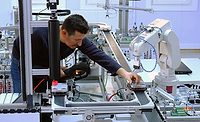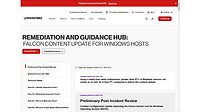VSD Air Compressors
Choose wisely when considering a variable speed drive, oil-free compressor
The compressor, motor and drive electronics must work together as a single unit to be efficient and have a long life

Some air compressor systems may run full throttle all day long—such as one place where I worked—because the air demand was continuous, and the machine could barely keep up. In such a situation, where there are air leaks and wasteful applications of air usage, there may not be a need for a variable speed air compressor system. But, for a carefully planned and engineered system, a variable speed compressor may be a good solution, depending on your needs.
Is a variable speed drive (VSD) air compressor the best solution for applications where demand fluctuates? The simple answer is “yes,” says Leo Di Bello, Atlas Copco compressors product specialist. “As proof, consider the rebates and other incentives that electric utilities and government agencies have historically offered to purchasers of VSD compressors.”
Of course, the best solution regarding type of compressor regulation (load/no load, fixed speed or variable speed) depends on the air demand profile of the application, says Di Bello. An air system audit is the best way to determine the existing demand profile. Armed with audit data, an engineer can make an informed decision regarding the best compressor solution for the application.
It’s important to realize that not all variable speed drive compressors are the same. Di Bello provides some important considerations for applications where demand for air fluctuates.
Evaluate turndown: Some variable speed drive compressors offer better turndown capability than others. That’s why it’s important to understand the application’s demand profile so a compressor can be specified that offers the best performance across the required operating range.
Compare SER (specific energy ratio) curves: To evaluate the SER curves for different brands and models, request a CAGI (Compressed Air and Gas Institute) performance data sheet from each compressor manufacturer. The chart shown above depicts the SER performance curves for five different 200 horsepower oil-free screw compressors. Design performance varies considerably; compressor B shows the best turn down performance and lowest energy consumption. Since 75% of a compressor’s lifecycle cost is power consumption, energy efficiency matters—a lot. Investing in a more efficient compressor pays returns through lower energy costs.
Avoid speed windows: Operating a compressor within limited ranges (i.e., speed windows) may limit operating ranges that cause resonance. However, if a component is allowed to operate in a range that causes resonance, it is often condemned to premature failure, compromising reliability. A compressor that is designed from the ground up for variable speed drive operation avoids the potential reliability, performance and efficiency pitfalls introduced by speed windows.
Avoid external frequency drives: Using external frequency drives on compressors not specifically designed for operation at variable speeds will not provide optimal turn-down capability. The manufacturer will have to limit the compressor’s operating range or program speed windows. In addition, the cost for shielded cabling required to minimize interference from an external frequency drive is significant.
Choose purpose-designed machinery: It’s crucial that variable speed drive motors are specifically designed for inverter duty and have necessary shielding to prevent pitting that can lead to premature bearing failures. Equally important is the necessary cooling capacity for operation at slower speeds. If cooling at slower speeds is not adequate, the drive motor will lose its magnetism and hence its torque ability, which will result in compressor shutdown.
Understanding your air demand profile will help you choose the air compressor with the best fit, performance, efficiency and reliability for specific applications.
For more information on the Atlas Copco Model ZR 90-160 VSD+, visit Atlas Copco on line.
Looking for a reprint of this article?
From high-res PDFs to custom plaques, order your copy today!







